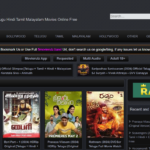10 Web Design Tips for Your Ecommerce Website
- 1 Top 10 Web Design Tips for An E-commerce Site
- 1.1 1. Prioritize User-Friendly Navigation
- 1.2 2. Optimize the Checkout Process
- 1.3 3. Implement Responsive Design
- 1.4 4. Utilize High-Quality Images and Videos
- 1.5 5. Incorporate User Reviews and Testimonials
- 1.6 6. Ensure Fast Loading Speed
- 1.7 7. Clear and Compelling Call-to-Action Buttons
- 1.8 8. Ensure Easy Search Functionality
- 1.9 9. Create Consistent Branding Throughout the Site
- 1.10 10. Secure Your Website
- 2 Conclusion
In the competitive world of online retail, the design of your e-commerce website can be a critical factor in attracting and retaining customers. A practical design not only captures the essence of your brand but also provides a seamless shopping experience for users.
With the right design strategies, your website can stand out in a crowded market, encouraging visitors to stay, explore, and ultimately make purchases. In this article, we’ll explore ten essential web design tips specifically for e-commerce sites, focusing on enhancing user experience, optimizing functionality, and boosting conversions.
Top 10 Web Design Tips for An E-commerce Site
1. Prioritize User-Friendly Navigation
One of the critical elements of an effective e-commerce website is user-friendly navigation. Your customers should be able to find what they are looking for with ease. This means having a clear, well-organized menu, straightforward categories, and a simple, intuitive site layout.
A search bar is also a must-have feature for quick access to specific products. Remember, the easier it is for customers to navigate your site, the more likely they are to make a purchase. Consider using breadcrumbs on product pages so users can easily trace back their steps, and ensure that your navigation is consistent across all pages for a cohesive user experience.
2. Optimize the Checkout Process
A smooth and efficient checkout process is crucial in preventing cart abandonment and increasing conversion rates. Optimize your checkout experience with effective ecommerce checkout integrations that streamline the process. This could include offering multiple payment options, simplifying form fields, and providing clear instructions at each step.
Consider integrating tools that allow for saved user information for faster checkouts on return visits. Also, transparently displaying shipping costs and return policies can build trust and reduce last-minute hesitations.
3. Implement Responsive Design
With a significant portion of online shopping occurring on mobile devices, having a responsive website design is non-negotiable. Ensure that your e-commerce site adapts seamlessly to different screen sizes and devices, providing an optimal viewing and interaction experience for users. This includes readable text without requiring zoom, adequate space for tap targets, and adaptable images and layouts.
A mobile-friendly site not only caters to a broader audience but also positively impacts your search engine rankings, as search engines like Google prioritize mobile responsiveness in their algorithms.
4. Utilize High-Quality Images and Videos
High-quality images and videos are essential in an e-commerce context, where customers rely heavily on visuals to make purchasing decisions. Ensure that your product images are clear and high-resolution and offer multiple views. Incorporating videos can also provide a more comprehensive look at your products, demonstrating functionality or showcasing them in use.
5. Incorporate User Reviews and Testimonials
User reviews and testimonials are powerful tools for building trust and credibility with potential customers. Featuring customer feedback on product pages can significantly influence buying decisions. Reviews provide social proof, offering real-life insights into the product experience. Make sure that the review process is easy for customers, and consider incentivizing feedback.
Displaying testimonials prominently, possibly with user-generated photos, can further enhance their impact. This not only demonstrates transparency but also creates a sense of community around your products and brand.
6. Ensure Fast Loading Speed
In a fast-paced digital world, users expect web pages to load quickly. Slow loading times not only frustrate visitors but also increase the likelihood of them leaving your site without making a purchase. To enhance loading speeds, optimize image sizes, minimize the use of heavy scripts and plugins, and choose a reliable web hosting service.
Regularly test your website’s speed using tools like Google PageSpeed Insights and make necessary adjustments.
7. Clear and Compelling Call-to-Action Buttons
Call-to-action (CTA) buttons are the guiding lights for your customers. They direct users on what to do next, whether it’s “Add to Cart,” “Learn More,” or “Check Out.” Your CTAs should be prominently placed, eye-catching, and use persuasive language. They should stand out from the rest of your page but still fit within your overall design and colour scheme. Experiment with different CTA placements and styles to see what works best for your audience.
Remember, effective CTAs can significantly increase your conversion rates.
8. Ensure Easy Search Functionality
For an e-commerce website, particularly one with a broad range of products, a practical search function is indispensable. A good search feature should include autocomplete suggestions, filters to narrow down results, and the ability to handle common typos. It not only makes the shopping experience more convenient but also helps users find exactly what they are looking for with minimal effort.
Consider adding a feature that displays popular products or recent searches to enhance the user experience further.
9. Create Consistent Branding Throughout the Site
Consistent branding across your e-commerce website reinforces your brand identity and creates a cohesive user experience. This includes using a consistent colour scheme, typography, and visual style that aligns with your brand’s personality. Every element on your site, from the header to the footer, product pages to the checkout process, should reflect your brand.
Consistent branding not only makes your site more aesthetically pleasing but also instils a sense of trust and professionalism in your customers.
10. Secure Your Website
Customers need to feel confident that their personal and payment information is safe when shopping on your site. Ensure your website has an SSL certificate, which encrypts data and secures the connection between your server and the visitor’s browser. Regularly update your website’s security measures and stay informed about the latest cybersecurity threats. Displaying security badges and certifications can also reassure customers and enhance the credibility of your site.
Conclusion
Designing an effective e-commerce website involves a careful balance of aesthetics, functionality, and user experience. From ensuring fast loading speeds to creating compelling CTAs, each element plays a crucial role in attracting and retaining customers.
By implementing these ten web design tips, you can create an e-commerce website that not only looks great but also performs well, providing a seamless shopping experience that drives sales and fosters customer loyalty.



















